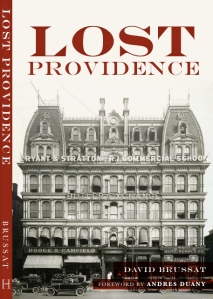Not sure how this place eluded my classical radar, but Starkville, Mississippi, home of Mississippi State, has a neighborhood called the Cotton District, between the downtown of the city of 23,000 and its university campus. Wikipedia calls it the nation’s first New Urbanist district, but it was conceived by Dan Camp, a former shop teacher, 20 years before the Congress of the New Urbanism was chartered, and at least 15 years before the development of Seaside, Florida – long considered the first New Urbanist town.
Dan Camp, according to this history of the Cotton District on its website, started building on a shoestring for students (also mostly living on a shoestring), and ended up with a lovely, thriving place that I feel embarrassed never to have heard of. He eventually became mayor of Starkville for a while.
A passage at the conclusion of the history (written by Dan Camp), makes an extraordinarily important point: “Presentations are still made to the Planning Commission and the Board of Alderman for setbacks and lot variances. However, it becomes easier and easier each time, as the true feeling and beauty of the area have become evident.”
The permitting and design approval process drives developers nuts in so many places, including Providence, because in most places planning officials do not learn. They do not learn that if developers build what people like, permitting goes down like an oyster. They prefer, for some reason, to build junk, and when resistance arises, they slog through the permitting process and then go home and cry into their beer.
Architect and planner Sara Hines, figuring I might need some story ideas, sent me a couple today, including one on Dan Camp’s Cotton District. The pictures here are hers. I don’t even need to write about the beauty of the place. The photos say it all. And there are many more at the Cotton District website linked to above.
This post is published with my thanks to you, Sara, for so many reasons – not least of which is that the Cotton District has now been pushed into the ambit of my radar.









Pingback: “Within Walking Distance” | Architecture Here and There
Mr. Brussat, would you like a few miniature paintings of the architectural specimens?
I would be happy to send you a 2.5″x3.5″ oil painting of your favorite building in the Cotton District.
Junesie
LikeLike
That’s so nice of you, June! How about the one that was the top photo on my post?
Many thanks!
David
LikeLike
Reblogged this on Architecture Here and There.
LikeLike
Sure, Arch329, the Arts & Crafts Movement, especially the bungalow movement, in America a hundred years ago is the echo (before the “modern” idea of modularity went spiritually bankrupt). I often ponder- how, in the early ‘aughts and ‘teens of the 20th C., one could find (and still see) in every small US hamlet and just off city center in every metro, the spectral street(s) of homes- all-different, all variously sited, all-different design/historical (revival) references, all-different intelligently thought out yards- and inhabited by, yes, a fairly well educated (that is- appreciative) middle class. The Palladian Idea meets the Tiny House movement in the 21st Century here in Starkville (wish it were “Simpletown”, or “Simplicity”). But, alas, we have our Huddle House(s) and McMansions as well. I am in great hope that we are entering the “Post-Sprawl” or more positively, “Neo- Human” era of homebuilding/community making. Dan Camp is a visionary. Thank you, David Brussat!
LikeLike
David, Dan Camp says, “Thank you for the recognition and you are welcome to visit us anytime.”
LikeLike
Mary, thanks for conveying Dan’s reaction to my piece. I would like to convey my appreciation for his having done the work he’s done for so many years, and regret only that I was unaware of it for so long, for reasons I cannot fathom. Some things just slip through the cracks, I suppose. Anyway, I hope to visit. Andres Duany, because he and I have disagreements amid our agreements on matters of urbanism and architecture, has invited me to tour a score or so New Urbanist developments. If I do go, I will insist on dropping in the Cotton District and visiting your office. (By the way, I am no longer on the editorial staff of the Providence Journal, but I cannot figure out how to change my bio.)
LikeLike
What I don’t understand is how some people can say designing buildings in a traditional way is a step back. A lot of high profile projects could’ve been designed with classical influences while still being forward thinking. Victorian architecture when it first came about was forward thinking, so was Art Nouvea, Beaux Arts, Art Deco, Second Empire so on and so forth. Good modern architecture exists but it is very rare.
LikeLike
Mark, it is easy to say it is a step back, and for those who don’t think things through it has a superficial ring of truth, but it is not true. “Our era” consists of everything in our era, including its new traditional buildings.
LikeLike
Perfectly spot on. I have been calling the New Urbanism the old urbanism for decades!
LikeLike
The Cotton District, similar to Seaside, is an example of what has become recognized as New Urbanism, but it was not the product of New Urbanism. Your article reveals something that is too often misunderstood about New Urbanism: it was not invented. It is not something actually “new”. In many ways, it is simply a rediscovery of qualities that have always existed, but were perhaps better understood maybe 100 years ago. Dan Camp and a couple of years later, Andres Duany, Elizabeth Plater-Zyberg, and Robert Davis started creating places that had qualities and character that resonated and reminded many of us of how things used to be with the demonstration of how they could be once again. In the same way that some of us, raised on Wonder Bread, rediscovered the recipes in our grandmothers’ cook books for fresh baked bread, we rediscovered the recipes for creating places that reinforced community; that related and responded to the context of place; that filled us with hope and were enjoyable. This happened a little more than half way through the Great 60 Year Sprawl Experiment, which began in 1947 and ended in 2007 with the Great Recession. While the Great Sprawl Experiment continued to destroy the triple bottom line of our economy, environment, and culture, the people who eventually would collect their thoughts and ideas to be recognized as New Urbanism continued to experiment with the philosophies of people like John Nolen and make those places that have provided the examples that we are now turning to as we try to work our way out of the product of auto-centric sprawl.
LikeLike